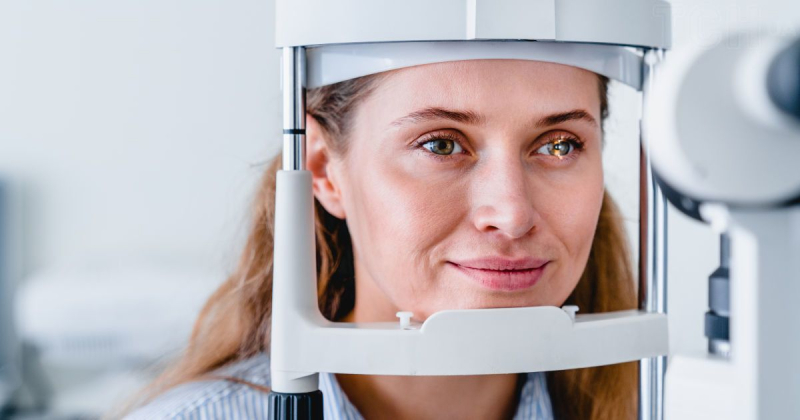
Lowering of the upper eyelids: an ophthalmologist explained how ptosis affects vision
A top category ophthalmologist, ophthalmic surgeon, candidate told about the causes of drooping eyelids and possible complications for vision in the absence of effective and timely treatment of medical sciences.

Congenital and acquired ptosis
Ptosis is a drooping or drooping of the upper eyelids caused by excessive relaxation or damage to the muscles that hold the eyelids in a vertical position. Can be congenital or acquired.
Congenital ptosis occurs due to a muscle defect, underdevelopment of the nervous system, muscle injury during birth, heredity. Paralysis of the oculomotor nerve, which controls the muscles of the face, can also be the cause if it is affected and does not function properly. This can lead to a temporary or permanent loss of movement and sensation in the face.
Among the reasons that provoke the development of acquired ptosis, I single out:
- injury of the muscles or nerves that control the lifting of the eyelids;
- neoplasms that grow through the muscle, disrupting its work;
- aging – with age, the muscles and tissues of the eyes lose tone;
- nervous disorders: myasthenia gravis, botulism, polyneuropathy, etc.;
- sugar diabetes;
- myotitis or muscle inflammation;
- myopathy – a group of neuromuscular diseases that lead to gradual thinning and loss of muscle function;
- stroke;
- complications after eye operations (cataract treatment) or eyelids (correction of age changes), etc.
The effect of ptosis of the eyelids on vision
Lowering of the eyelids is not only an aesthetic problem. Depending on how much they are lowered, ophthalmic disorders and diseases can occur, which are complications of ptosis, in particular:
1. amblyopia or lazy eye – a decrease in visual acuity due to the lack of a full-fledged connection between the eyes and the brain;
2. strabismus – a vision disorder in which one or both sides deviate from the visual axis in the direction of the object;
3. astigmatism – a disease in which the cornea and/or lens have an irregular, slightly flattened shape, something like a melon or an American football. Due to this, light rays are focused on the retina not at one point, but at several points: some are behind or in front of the retina, others are on the retina, creating the effect of “fog” or doubling;
4. chronic conjunctivitis – inflammation of the mucous membrane, that is, the conjunctiva, which covers the surface of the eye and the inner surface of the eyelids.
Also, ptosis worsens the quality of life, because less light falls on the retina, and the eyes tire quickly when reading or working at the computer. The field of vision decreases, especially if the degree of ptosis is complete. There is also partial and incomplete ptosis, which cause a person moderate discomfort. But over time, the incomplete is usually transformed into a complete one.
Treatment of ptosis
Incomplete and partial ptosis of the eyelids can be treated with eye drops gymnastics, local physiotherapy, drugs that nourish nerve tissue and restore the sensitivity of nerve endings.
Complete or congenital ptosis is treated only with the help of surgical intervention – muscle surgery. During the operation, the muscles responsible for lifting the eyelids are tightened. Thanks to this, the sight “opens” and a person can again fully read, work, study without visual fatigue and discomfort.
The treatment method depends on the cause of drooping of the eyelids, which must be established in advance during a comprehensive examination. In some cases, it is advisable to undergo a course of physiotherapeutic treatment before the operation.
In any case, drooping eyelids is a serious disorder that cannot be ignored not only because of the aesthetic component, but also because it can significantly worsen the health of your eyes.









Leave a Reply